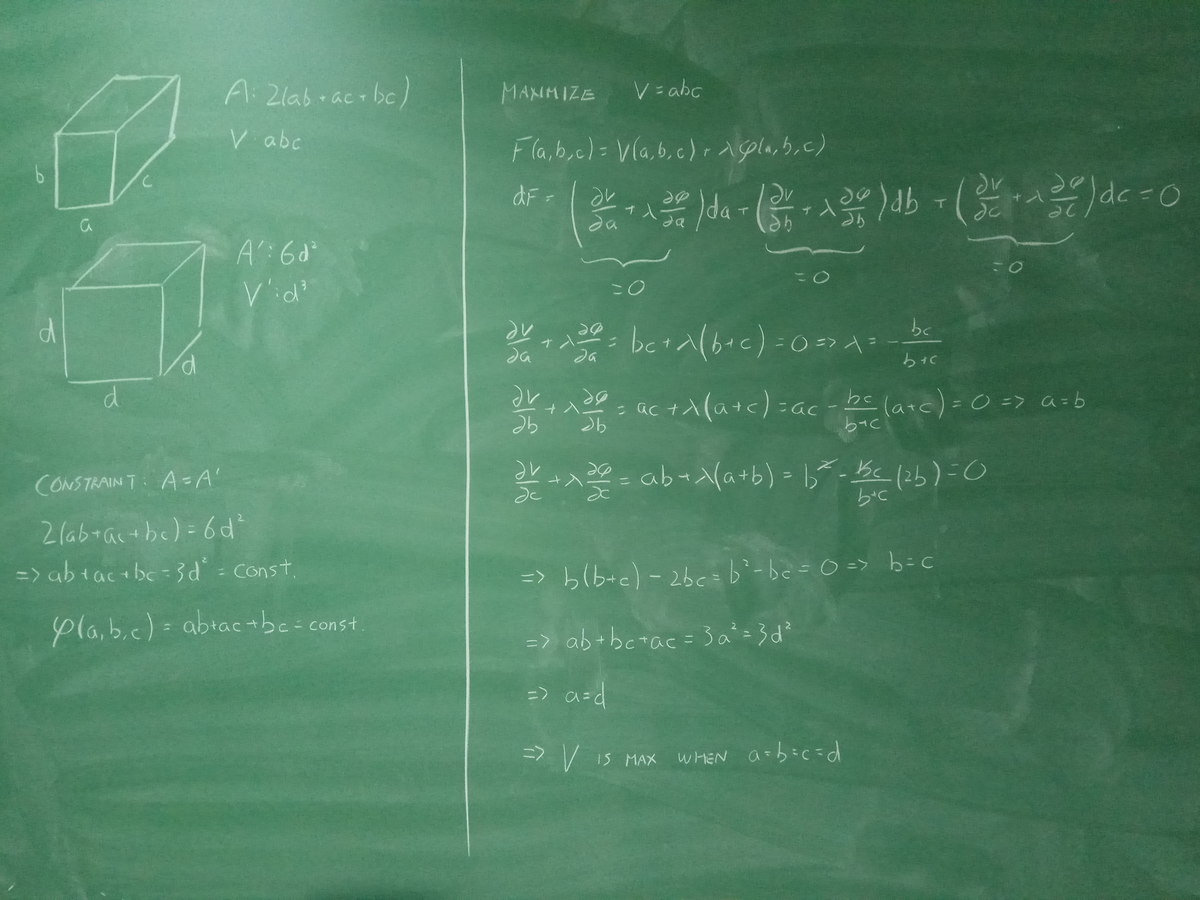Boxes
Suppose that the two boxes above have the same surface area and that the three dimensions of the cuboid are not all the same. Which one has a larger volume?
This section requires Javascript.
You are seeing this because something didn't load right. We suggest you, (a) try
refreshing the page, (b) enabling javascript if it is disabled on your browser and,
finally, (c)
loading the
non-javascript version of this page
. We're sorry about the hassle.
3 solutions
let 2 , 3 and 5 be the dimensions of the cuboid. so the surface area is 2 [ 2 ( 3 ) + 3 ( 5 ) + 2 ( 5 ) ] = 6 2 and the volume is 2 ( 3 ) ( 5 ) = 3 0 .
from the surface area of the cuboid, the side length of the cube is 6 6 2 = 3 3 1 so the volume of the cube is ≈ 3 3 . 2 2
∴ With equal surface areas, the cube has a larger volume.
A specific example does not generalize. In particular, it is a proof by example mistake.
You can use a Lagrange multiplier.

Let side of length of cube is a and dimensions of cuboid is p , q , r where these three not all equal.
So, 6 a 2 = 2 ( p q + r q + p r ) > 2 . 3 ( p q r ) 2 / 3 (Using AM-GM) equality will not be there because these three can not be equal then this will become a cube.
a 2 > ( p q r ) 2 / 3 = > a > ( p q r ) 1 / 3 = > a 3 > p q r ⟹ Volume of Cube > Volume of Cuboid